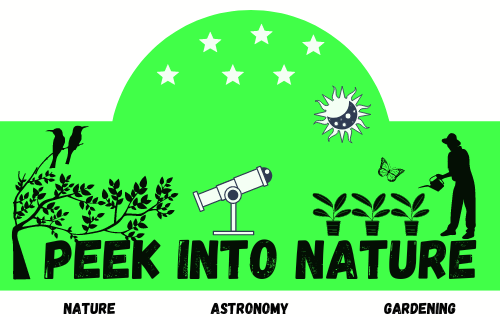Earth is bombarded with millions of tons of space material each day. Most of the objects vaporize in our atmosphere, but some of the larger pieces (from pebbles to boulder-sized rocks) actually fall to the ground.
So let’s understand where do these space materials come from.
The space material are mostly coming in the form of meteors which originate from either an Asteroids or a Comets.

What is an Asteroid?

Asteroids are small, rocky objects that orbit the sun. Although asteroids orbit the sun like planets, they are much smaller than planets.

There are lots of asteroids in our solar system. Most of them live in the main asteroid belt—a region between the orbits of Mars and Jupiter.

What is a Comet?

Comets are basically dusty snowballs which orbit the Sun. They are made of ices, such as water, carbon dioxide, ammonia and methane, mixed with dust. These materials came from the time when the Solar System was formed.
Comets have an icy center (nucleus) surrounded by a large cloud of gas and dust (called the coma). The coma is created as the ice in the nucleus is warmed by the Sun and vaporizes. Comets can develop two tails as they travel closer to the Sun: a straight gas tail and a curved dust tail.

The gas tail is created by the solar wind, pushing gas away from the comet’s coma and pointing straight back from the Sun. The dust in the coma is not affected by magnetic fields but is vaporized by the Sun’s heat, and forms a curved tail which follows the comet’s orbit.
What is the difference between an asteroid and a comet?
The main difference between asteroids and comets is their composition, as in, what they are made of. Asteroids are made up of metals and rocky material, while comets are made up of ice, dust and rocky material. Both asteroids and comets were formed early in the history of the solar system about 4.5 billion years ago.
Asteroids formed much closer to the Sun, where it was too warm for ices to remain solid. Comets formed farther from the Sun where ices would not melt. Comets which approach the Sun lose material with each orbit because some of their ice melts and vaporizes to form a tail.
What is the size of a comet?
Most comets have a nucleus (the center of a comet) that is less than about 6 miles (10 km) wide. The size of a comet changes depending on how close it is to the sun. As a comet gets closer to the sun, the ices on the surface of its nucleus vaporize and form a cloud called a coma around the nucleus that can expand out to 50,000 miles (80,000 km). A tail also forms on a comet as it approaches the sun. Comet tails can be over 600,000 miles (1 million km) long.
What is a Meteorite?
A Meteorite is a piece of Comet or an Asteroid enters the Earth’s Atmosphere and survives the journey and hits the surface.

Whether an object breaks apart depends on its composition, speed and angle of entry. A faster meteor at an oblique angle (slanting rather than straight-on) suffers greater stress.

Most meteorites are one of three types: stony, stony-iron, or iron. These compositions tell us where the meteoroid existed in its parent body.
An iron or stony iron was close to the core of an asteroid, while a stony object was closer to the surface.
What is a meteor shower?

The appearance of a number of meteors occurring in the same part of the sky over a period of time is called “meteor shower”.

As a comet travels close to the Sun, it heats up and part of the comet vaporizes. After a comet has orbited the Sun many times, a lot of small pieces of the comet are left along the comet’s path.
A meteor shower happens when Earth passes through the path of a comet. When this happens, the bits of comet debris, most no larger than a grain of sand, create streaks of light in the night sky as they burn up in Earth’s atmosphere. Bits of debris which enter Earth’s atmosphere are called meteors.

On any night, there are several small meteors which shoot across the sky. However, during a meteor shower, tens to hundreds of meteors can be seen each hour. Many of these meteor showers can be predicted and occur at the same time each year.


Very nice article and is easy to understand.
Answer for the quiz : Shoemaker – Levy 9.
Correct..
Good informative
Thank you
Very crisply written and put across, how I wish we could have these as one of the subjects back at school… Thank you for taking up the initiative. Eagerly awaiting for your next article to learn more